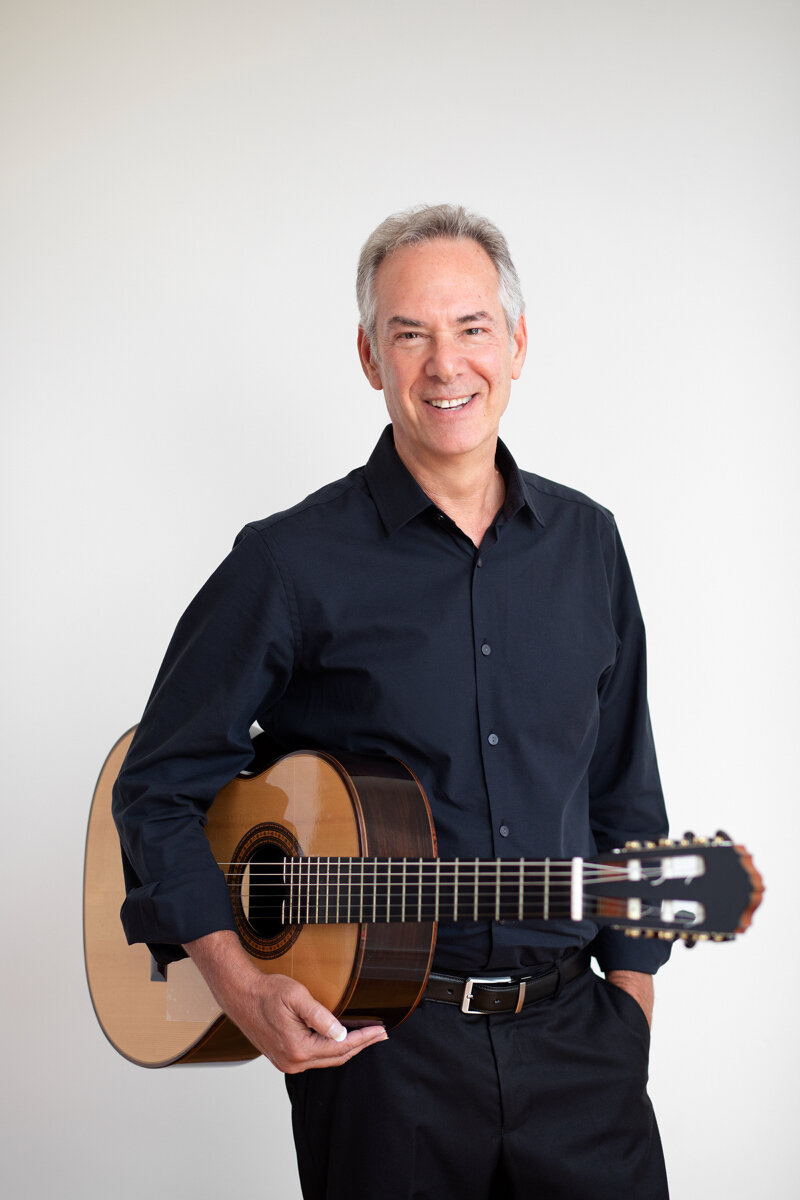Most readers will remember those great Seinfeld episodes: one on the "low-talker" and the other one on the "loud talker." This same dilemma is a frequent concern of mine as I teach. At what volume should the students practice, and at what volume should they perform?
The guitar is famously the quietest of the classical instruments. It's natural voice, played at a level we might call mezzo-forte, is no match for the piano or harp played at what they would regard as the same level. When pairing with other instruments, this weakness is often apparent, especially in works not written to the instruments' natural strengths. The guitar is easily covered by a pair of string players (or one cellist), and is fully masked by brass instruments.
Of course there are louder and softer guitars. Some recent developments in luthiery have resulted in instruments that can more fully match the resonance of orchestral instruments (notably double-top and lattice-braced guitars), but the basic reality still prevails: the guitar is pretty soft.
This is why it concerns me when a student plays exceptionally softly. The guitar's velvety, intimate tone qualities are most easily accessed when the volume is low. Another way to put it is that bad tone it well-hidden when playing softly. The challenge of delivering that same rich, warm tone at a louder volume is considerable and represents a hill many students seem reluctant to climb. (See my post on tone production here).
They practice softly because it sounds better, but in doing so, fail to cultivate musical dynamics or the ability to project the instrument's sound into a room. A constant refrain in my studio is to remind the student of the size of the room their recital will take place in, and that they must learn to play to that room. The analogy to speaking is easy: the voice level you might use in talking to someone at a table in a restaurant is not the same as the level you would use in speaking to a large room-full of people without a microphone. One learns to adjust their level to the space and circumstance they are in.
In the Seinfeld episodes, the low-talker always spoke in a level comically too quiet to hear. People got tired of always saying "eh?" or "what's that?" and began just agreeing. Complications ensued. The loud-talker, similarly, always spoke embarrassingly loud in inappropriate places. Both are common social faux-pas, but we sometimes do the same thing as players.
I have students who play everything too loud. They are shouting all the time. They've become infatuated with the amount of sound they can produce. But it isn't very appealing music-making.
Far more common, though, is the low-player. These students play everything at a whisper. We become quickly habituated to how we play; it doesn't take many repetitions of a piece for our interpretation of it to become largely codified. Just try getting a low-player to incorporate a big dramatic crescendo--more often than not, they begin missing notes. They become so used to that familiar, comforting soft touch that any change causes havoc. In response, I have an excersise I find is effective at combatting this problem.
I ask the student to play every note forte. EVERY NOTE. This can (must) be done slower than tempo, and should be well-monitored to be sure other problems don't arise, such as tensed posture or wrist positions, and to be sure it is done throughout a piece. (Starting loud is one thing, but follow-through is another matter: we fall back into old habits quickly if we're not vigilant).
Playing every note loud is oddly unmusical. It should feel totally counterintuitive. This type of training has nothing to do with musicianship in the finer sense of the term. It is primarily to cultivate the physical ability to produce a larger sound. But doing it has other impacts as well. It can help tremendously with memorizing: playing each note with emphasis makes it hard to be vague about which notes they are. Along with the new certainty about every note that such emphasis creates, comes greater confidence in general.
This can work a bit like behavior-modification therapy. If you engage in the behaviors you want, even in a forced and self-conscious way, it can lead to changes in the way you feel and self-perceive and, ultimately, behave. If you are a low-player, it could be mostly because you have weak hands or undeveloped tone. It could also be a reflection of general insecurity about playing. Play every note loud and suddenly you sound like a confident player. Sounding like a confident player can actually help you achieve greater confidence. This is a pure win-win result.
But my primary point is about projection. When performers play at a level too soft for the room, it is not enjoyable for the audience. Too much of the musical content is lost; the story doesn't really get told. The slightest external sounds threaten to overwhelm entire phrases-- a rustling coat, the hum of a fan, someone whispering. It is our job as players to make the concert-going experience a positive one. We need to do many things well, of course, to acheive that result, but it is fundamental that, as a point of departure, we play at a level suitable for the room.


